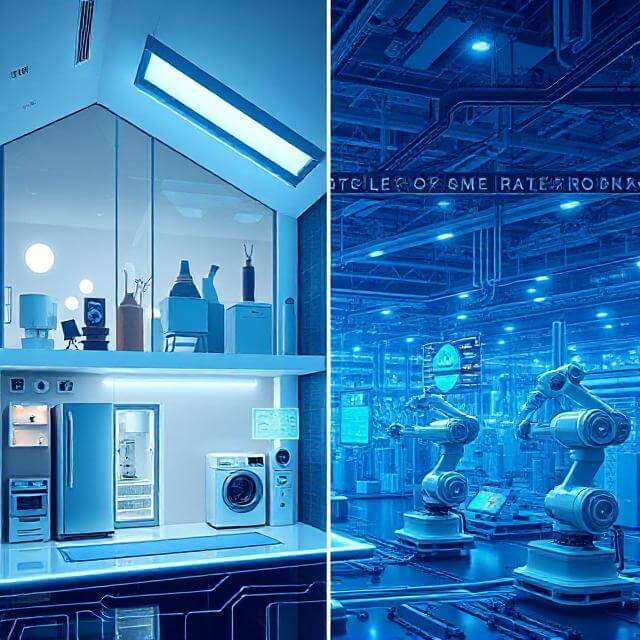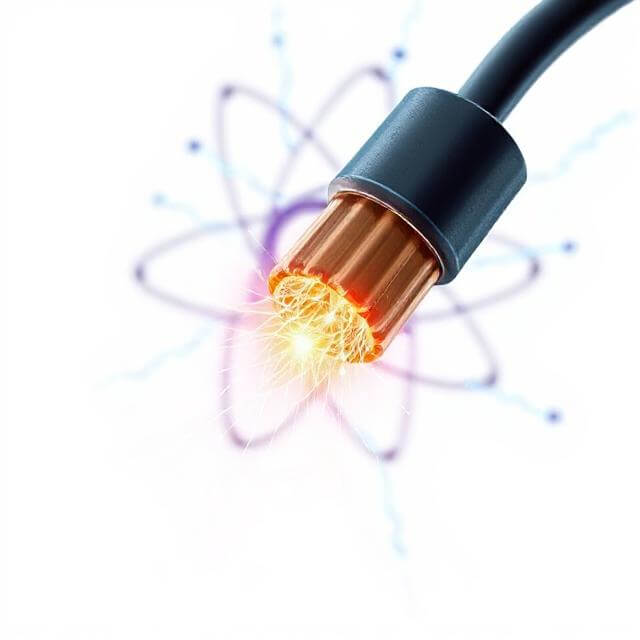Internet of Things (IoT) in Smart Homes and Industry: Revolutionizing Daily Life and Business Operations
Published on Learn Sufficient Notes – sufficientnotes.com
Table of Contents
- Introduction
- What is the Internet of Things (IoT)?
- The Evolution of IoT
- Key Components of IoT Systems
- IoT in Smart Homes
- IoT in Industrial Applications (IIoT)
- Benefits of IoT in Smart Homes
- Benefits of IoT in Industry
- Challenges and Concerns
- Security and Privacy in IoT
- Future Trends in IoT
- Career Opportunities in IoT
- Conclusion
- FAQs
1. Introduction
In the age of rapid digital transformation, the Internet of Things (IoT) has emerged as a revolutionary force, reshaping the way we live and work. From smart refrigerators to interconnected factory machinery, IoT is embedded in the very fabric of modern society. In this comprehensive guide by Learn Sufficient Notes, we explore how IoT in Smart Homes and Industry is unlocking new efficiencies, improving safety, and revolutionizing daily operations.
2. What is the Internet of Things (IoT)?
IoT refers to a network of physical devices embedded with sensors, software, and connectivity that allows them to collect and exchange data over the internet.
These devices can range from:
- Household gadgets like thermostats, lights, and speakers
- Wearables such as fitness bands and smartwatches
- Industrial machines in factories
- Vehicles and healthcare equipment
With IoT, everyday objects become smart, responsive, and capable of making data-driven decisions.
3. The Evolution of IoT
The concept of connected devices dates back to the early 1980s. However, the term “Internet of Things” was coined by Kevin Ashton in 1999. Since then, IoT has grown exponentially with the development of cloud computing, AI, and 5G.
- 1990s: Introduction of RFID and early machine communication
- 2000s: Rise of smartphones and mobile internet
- 2010s: Emergence of smart homes and wearables
- 2020s: Integration of AI, big data, and edge computing in IoT
4. Key Components of IoT Systems
IoT systems typically consist of:
a) Sensors and Devices
Collect real-time data from the environment (e.g., temperature, motion, location).
b) Connectivity
Transfer data to cloud or local servers via Wi-Fi, Bluetooth, Zigbee, LTE, or 5G.
c) Data Processing
Servers analyze and process the data to derive actionable insights.
d) User Interface (UI)
Users interact with IoT devices through mobile apps, dashboards, or voice assistants.
5. IoT in Smart Homes
Smart homes leverage IoT to automate and optimize everyday tasks, enhancing comfort, energy efficiency, and security.
Popular Smart Home Devices:
- Smart Thermostats: Adjust temperature based on your habits
- Voice Assistants: Amazon Alexa, Google Assistant
- Smart Lighting: Remote control and motion sensors
- Security Cameras and Doorbells: Real-time alerts and video streaming
- Smart Appliances: Refrigerators, ovens, washers connected to Wi-Fi
Example:
Your smart thermostat lowers the heat when you leave and turns it back on before you return—automatically and efficiently.
6. IoT in Industrial Applications (IIoT)
The Industrial Internet of Things (IIoT) refers to IoT in manufacturing, logistics, energy, and other industrial sectors.
Use Cases:
- Predictive Maintenance: Sensors detect machine wear to prevent breakdowns
- Asset Tracking: Real-time monitoring of equipment and inventory
- Smart Manufacturing: Automation of production lines
- Energy Optimization: Monitoring and adjusting power usage
- Supply Chain Management: Enhanced logistics and shipment tracking
Real-World Examples:
- GE uses IIoT to monitor turbines and reduce downtime
- Siemens implements smart factories for data-driven production
7. Benefits of IoT in Smart Homes
- Convenience: Automate routine tasks
- Energy Efficiency: Smart thermostats and lighting reduce bills
- Security: 24/7 surveillance and instant alerts
- Remote Monitoring: Check and control your home from anywhere
- Accessibility: Voice and app-based control ideal for elderly or disabled
8. Benefits of IoT in Industry
- Reduced Downtime: Predict failures before they occur
- Cost Savings: Lower maintenance and energy costs
- Improved Safety: Real-time hazard detection
- Product Quality: Constant monitoring ensures consistent output
- Operational Visibility: Instant insights from anywhere in the world

9. Challenges and Concerns
Despite its benefits, IoT adoption faces several challenges:
- Data Overload: Managing large volumes of data
- Compatibility Issues: Integrating devices from multiple vendors
- Cost of Deployment: Initial investment in sensors and infrastructure
- Limited Battery Life: Many devices depend on low-power solutions
10. Security and Privacy in IoT
Security is one of the biggest concerns in IoT:
- Hacking Risks: Poorly secured devices can be entry points
- Data Breaches: Sensitive information could be leaked
- Privacy: Continuous data collection may intrude on user privacy
Solutions:
- End-to-end encryption
- Regular firmware updates
- Strong password policies
- Network segmentation
11. Future Trends in IoT
The IoT landscape is rapidly evolving with the following trends:
- Edge Computing: Reduces latency by processing data closer to the source
- AI + IoT (AIoT): Intelligent decision-making and automation
- 5G Connectivity: Enables faster and more reliable communication
- Digital Twins: Virtual replicas of physical systems for simulation
- Blockchain Integration: Enhances data integrity and security
By 2030, it’s estimated there will be over 29 billion connected devices globally.
12. Career Opportunities in IoT
IoT is a booming career field with multiple job roles:
- IoT Developer
- Embedded Systems Engineer
- Data Analyst/Scientist
- Network Architect
- Cybersecurity Expert
Required Skills:
- Knowledge of sensors, microcontrollers (e.g., Arduino, Raspberry Pi)
- Programming (Python, C/C++)
- Cloud platforms (AWS, Azure, Google Cloud)
- Networking protocols (MQTT, CoAP)
Explore career guides and skill-building tutorials on Learn Sufficient Notes.
13. Conclusion
The Internet of Things (IoT) is not just a buzzword—it’s a powerful force reshaping our homes and industries. Whether you’re a tech enthusiast, a homeowner, or a business leader, understanding and leveraging IoT can lead to smarter decisions, better efficiency, and a more connected future.
Keep learning more about emerging technologies at Learn Sufficient Notes — your trusted partner in futuristic education.
14. FAQs
Q1. Is IoT safe to use in smart homes?
Yes, as long as you follow proper security practices like strong passwords, secure Wi-Fi, and regular updates.
Q2. What industries benefit most from IoT?
Manufacturing, logistics, healthcare, and energy are top industries gaining from IoT adoption.
Q3. Can I start a career in IoT without a degree?
Yes, with the right certifications and hands-on projects, you can build a successful career in IoT.
Q4. Is IoT the same as AI?
No. IoT is about connectivity and data sharing; AI analyzes and makes decisions based on that data.
Q5. Where can I learn more about IoT?
Visit Learn Sufficient Notes for tutorials, articles, and career guidance.
Stay connected. Stay smart. 🌐
Explore more only on Learn Sufficient Notes



